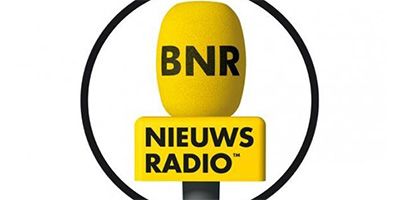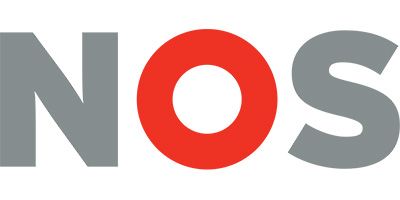
Having such a strong brand, that you don’t even have to use your logo in advertising materials anymore.
McDonald’s suggested to be such a brand. At the end of 2014, they launched their gutsy ‘no-logo’ campaign, followed by multiple similar campaigns that did not display their logo. What these advertising materials did contain? Iconic products and a minimalist design. Because, as Pete Heyes, creative director of the advertising company behind McDonald's, said, "McDonald's is a leader."
But was this a smart move from McDonald's? Is the brand really that strong that ads are recognized even without a logo or name? Or do they miss the mark and are other fast food brands such as Burger King secretly snacking on these campaigns?
Would you like to see the complete Brand Asset testing report we made for McDonald's (on our own initiative)? You can download the full research report by clicking the button below (PDF, 7.1 MB).
In this blog we reveal the answers to these questions with data from our Brand Asset Test.
The key to success: Brand Assets
Brand assets such as logos, slogans and visual styles are essential to achieve a strong position in the consumer’s brain. Brand assets serve as a kind of mental shortcut in the brain of the consumer that can make your brand top of mind at the moment purchasing decisions are made. A strong portfolio of assets ensures that more people think about your brand more often - thereby dramatically increasing the presence of the brand in the customer’s buying decisions.
An example of such a brand asset is the logo of a certain brand, but there are many other tangible elements that can serve as a brand asset. Think of symbols (Nike’s swoosh), slogans (McDonald’s “I’m lovin’ it”), packaging (Coca Cola’s bottle), color (Cadbury’s purple), music, sounds and jingles (Kit Kat’s ‘Give me a Break’), advertising materials (Mastercard’s recurring priceless campaign), characters (Ferrero’s Kinder boy) and celebrities (Gillete’s many athlete’s endorsements).
All of these assets can signal a brand to the consumer, giving it a top-of-mind position, and increasing the likelihood that the consumer will choose a brand.
Measuring Brand Assets with the Brand Asset Monitor
Whether you want insight into the awareness of your brand or its recognisability, thinking about revising your brand identity or considering introducing new assets of which you do not know the potential beforehand, doing brand asset research is essential.
Unravel’s Brand Asset Monitor uses evidence-based research techniques to capture the Fame and Uniqueness of your brand assets. The methodology can be performed reliably by means of online surveys. In addition to Fame and Uniqueness, Unravel also investigates the emotional, unconscious reactions to brand assets based on reaction time. This gives you a complete picture of the most important assets and the emotional reactions that these assets generate.
The results of a brand asset test are practical and immediately provide the optimal strategic direction for each asset. Based on its performance on Fame and Uniqueness, each asset is categorized into one of the four quadrants of the Distinctive Brand Asset Grid with a specific recommendation on how to proceed: “Ignore or Test”, “Avoid Solo Use”, “Investment Potential” and “Use or Lose”.
Sample Report McDonald’s
Recently, Unravel conducted the Brand Asset Monitor for McDonald’s on its own initiative. We were curious as to whether the brand is indeed so strong that it can advertise without a logo without any problems. And of course it was a great opportunity to develop a public sample report of the Brand Asset Monitor. Because of the fact that our reports provide valuable insights for specific brands, they are normally only visible to the commissioning party. By means of a sample report, we can nevertheless provide you with a clear and concrete picture of what a report looks like.
What the report shows is that McDonald’s has a number of strong brand assets. On average, McDonald’s brand assets, including the iconic “M” sign, colors, products, packaging, interior and exterior, and slogan, significantly outperform the brand assets of competing brands such as Burger King and KFC. The assets score high on Fame (everyone recognizes them) and Uniqueness (they don’t inadvertently activate other fast food brands).
In addition, the assets elicit positive emotional responses, the most important being Fast, Successful, Reliable, Tasty and Unique. So, in addition to the fact that McDonald’s has a top-of-mind position when it comes to its brand assets, these brand assets themselves also generate positive emotions. A strong piece of branding, therefore.
So is ‘no logo’ really ‘no problem’?
As we can see in this sample report, McDonald’s brand assets are incredibly strong. The shape of the logo, the exterior, its product, its packaging; all of these assets fall into the “Use or Lose” quadrant and are thus both well known and unique to McDonald’s. We also see that McDonald’s brand assets are much stronger than the assets of competing brands.
So, if there is a brand that can afford to advertise without a logo but with other brand assets, it must be McDonald’s. Brand assets other than the logo ensure that the ads are still recognizable to McDonald’s. In addition, McDonald’s received a lot of media attention with this campaign, which is beneficial for the brand as well. So, not a stupid move at all, this campaign.
Want to test your Brand Assets?
Curious about how strong your brand’s assets are? With Unravel’s validated Brand Asset Monitor you get crystal clear insights into the familiarity and uniqueness of each asset. After this research, you know exactly what to do to get the most out of each asset.
Click here to request a proposal for Brand Asset Testing.
References
Romaniuk, J. (2018). Building distinctive brand assets. Oxford University Press.
Sharp, B., & Romaniuk, J. (2016). How brands grow. Oxford University Press.
Ward, E., Yang, S., Romaniuk, J., & Beal, V. (2020). Building a unique brand identity: Measuring the relative ownership potential of brand identity element types. Journal of Brand Management, 27(4), 393-407.






